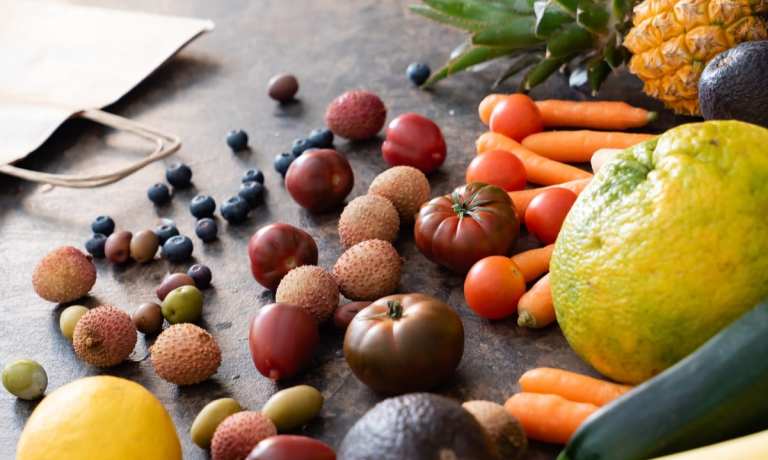Anti-Food Waste Platform Too Good To Go Offers ‘Win-Win-Win’ For Businesses And Consumers

As the general population’s awareness of food waste grows, more businesses emerge to provide sustainable commerce solutions, and as these businesses come to the fore, more consumers become aware of the issues in a sort of virtuous commerce cycle. Where once the vast majority of American consumers threw away food without much of a care, besides perhaps some concern for the wasted money, and where once grocery stores’ and restaurants’ waste remained largely invisible to the consumer, there is now a quickly growing group of sustainability-minded shoppers looking to support businesses that share their values.
Anti-food waste app Too Good To Go, for one, joins consumer interest in fighting food waste with the joy of supporting local restaurants and grocery stores. The platform allows vendors to sell edible food that would otherwise be thrown away to consumers at a third of the original price, while consumers can view local listings and purchase these discounted foods. The app’s marketplace has been growing internationally, currently operating in 15 countries and expanding across the coasts of the U.S., with Washington, D.C. being the most recent addition.
“We created an app that connects people to local stores that might have food at the end of the day,” Too Good To Go Co-Founder and Chief Expansion Officer Lucie Basch told PYMNTS in a recent interview. “It’s building that win-win-win concept where the stores have a single solution to not throw away food anymore, where each of us can actually do something for fighting food waste and get great products at a third of the price … From the beginning we’ve saved more than 65 million meals now from the trash.”
Rising Interest In Taking Action
The audience for these sorts of eco-conscious marketplaces is only growing, as consumers learn more about food waste.
“I think people are becoming more and more aware of the issue,” said Basch. “The fact that food waste is responsible for 8 percent of greenhouse gas emissions — it’s huge. If food waste were a country, it would be actually the third biggest polluter, after the U.S. and China. So I think those messages are really becoming stronger and stronger.”
She added that, given the proliferation of this sort of information, many consumers have been seeking out ways to engage with the issue, willing to put their money where their moral compass is. Basch explained that many shoppers are interested in “doing those micro actions on their own that, put next to each other, are going to scale massively.”
In choosing markets to expand into, the company both considers whether “people [there are] willing to move into action” and how much of a need there is in that location.
“The U.S. was super clear,” she said. “Actually in the U.S. we throw away 40 percent of the food we produce … so we kind of had to make a difference in the U.S.”
Succeeding in the U.S. will build “the credibility we need as well to expand all over the world,” she said.
The Element Of Surprise
When consumers place an order with Too Good To Go, they are typically purchasing a grab bag, without knowing what will be inside. Orders typically run between about $4 and $6. If an order is $4.99, Basch explained, the consumer gets $15 worth of food, Too Good to Go gets $1.79, and the store keeps $3.20. Consumers do not know what they will receive, since businesses generally randomly distribute whatever food they have left at the end of the day into their Too Good to Go bags. This element of discovery is one of the features that keeps the app’s customers coming back.
“Seventy percent of our users say that’s one of the things they like the most in Too Good to Go,” explained Basch. “It’s kind of like — it’s part of a game. And as kids I think we all grew up loving surprises and this is the opportunity to [get that as an adult] and also to discover products, great food, so it’s working really well.”
Hitting Big In The States
The company was founded in Copenhagen and has expanded to many cities in Europe. The U.S., however, has been the quickest to adopt the app, enabling the company to expand considerably quicker than anticipated.
“We started in New York and Boston, because we really wanted to … prove that the model that has been so successful in Europe could also work in the U.S. And actually, after just a few months, we realized that it was even more successful than what we’ve seen in Europe. This has been the fastest launch we’ve ever experienced in the history of Too Good To Go.”
She attributed the success in the U.S. in part to “the lack of focus we’ve had in the country” on environmental issues on a federal level, specifying that the policies of the presidential administration at the time of the app’s U.S. launch in the fall of 2020 may have incentivized sustainability-minded consumers to take individual action where possible.
In addition, the wake of the pandemic has seen a new “sense of solidarity,” with many consumers looking for ways to support their local businesses. And, she noted, the financial strain of the pandemic may have prompted many consumers to look for more affordable food options. She reflected that even though it was “obviously a big bet” to launch during the pandemic, it ultimately paid off.
She said the company sold 250,000 meals within the first six months, working with 2,000 stores, prompting the company to accelerate its expansion. Now, in addition to New York, Boston, and D.C., the marketplace is also available in San Francisco, Seattle, and Portland.
“And then we really want to scale across the whole country,” said Basch. “So we’ll be launching many more states, and we hope to be really national by the end of the year.”
Read More On Grocery:
- GrubMarket Raises $50 Million for Food Supply Chain B2B Solutions
- Instacart Adds AI-Powered Tools to Deliver Personalized Grocery Shopping Recommendations
- Tariff Uncertainty Creates Challenges in Produce Industry
- Amazon Gains in Home Furnishings as Walmart’s Market Share Declines, Data Shows



